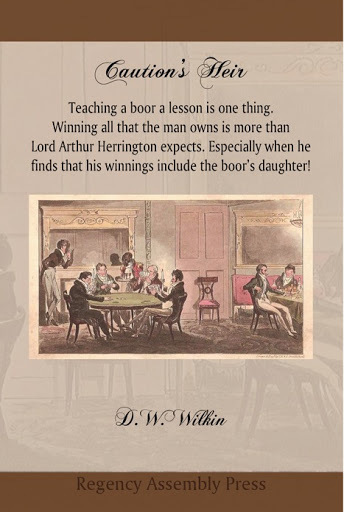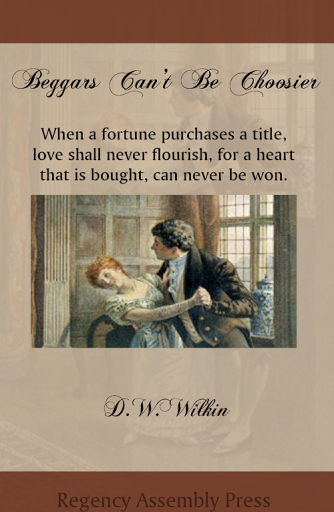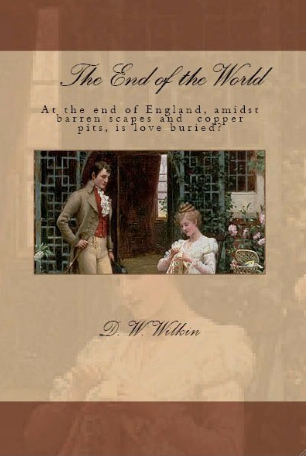D.W. Wilkin's Blog, page 165
December 13, 2014
Caution’s Heir from Regency Assembly Press-Now available everywhere!
Caution’s Heir is now available at all our internet retailers and also in physical form as well
The Trade Paperback version is now available for purchase here @ $15.99 (but as of this writing, it looks like Amazon has still discounted it 10%)
Caution’s Heir is also available digitally for $4.99 @ the iBookstore, Amazon, Barnes and Noble, Kobo and Smashwords.
The image for the cover is a Cruikshank, A Game of Whist; Tom & Jerry among the ‘Swell Broad Coves.’ Tom and Jerry was a very popular series of stories at the time.
Teaching a boor a lesson is one thing.
Winning all that the man owns is more than Lord Arthur Herrington expects. Especially when he finds that his winnings include the boor’s daughter!
The Duke of Northampshire spent fortunes in his youth. The reality of which his son, Arthur the Earl of Daventry, learns all too well when sent off to school with nothing in his pocket. Learning to fill that pocket leads him on a road to frugality and his becoming a sober man of Town. A sober but very much respected member of the Ton.
Lady Louisa Booth did not have much hope for her father, known in the country for his profligate ways. Yet when the man inherited her gallant uncle’s title and wealth, she hoped he would reform. Alas, that was not to be the case.
When she learned everything was lost, including her beloved home, she made it her purpose to ensure that Lord Arthur was not indifferent to her plight. An unmarried young woman cast adrift in society without a protector. A role that Arthur never thought to be cast as. A role he had little idea if he could rise to such occasion. Yet would Louisa find Arthur to be that one true benefactor? Would Arthur make this obligation something more? Would a game of chance lead to love?
Today, the iBookstore is added, HERE
Get for your Kindle, Here
In Trade Paperback, Here
Digitally from Smashwords, Here
For your Sony Kobo, Here
Or for your Nook, Here
From our tale:
Chapter One
St. Oswald’s church was bleak, yet beautiful all in one breath. 13th century arches that soared a tad more than twenty feet above the nave provided a sense of grandeur, permanence and gravitas. These prevailed within, while the turret-topped tower without, once visible for miles around now vied with mature trees to gain the eye of passers-by.
On sunny days stain-glass windows, paid for by a Plantagenet Baron who lived four hundred years before and now only remembered because of this gift, cast charming rainbow beams across the inner sanctum. And on grey overcast days ghostly shadows danced along the aisle.
As per the custom of parish churches the first three pews were set-aside for the gentry. On this day the second pew, behind the seat reserved for the Marquess of Hroek, who hadn’t attended since the passing of his son and heir, was Louisa Booth his niece and her companion Mrs Bottomworth.
Mrs Bottomworth was a stocky matron on the good side of fifty. Barely on the good side of fifty. But one would not say that was an unfortunate thing for she wore her years well and kept her charge free of trouble. Mrs Bottomworth’s charge was an only child, who would still have been in the schoolroom excepting the fact of the death of her mother some years earlier. This had aged the girl quickly, and made her hostess to her father’s household. The Honourable Hector Booth, third son of the previous Marquess, maintained a modest house on his income of 300 pounds. That was quite a nice sum for just the man and one daughter, with but five servants. They lived in a small, two floor house with four rooms. It should be noted that this of course left two bedchambers that were not inhabited by family members. As the Honourable Mr Booth saved his excess pounds for certain small vices that confined themselves with drink and the occasional wager on a horse, these two rooms were seldom opened.
Mrs Bottomworth had thought to make use of one of the empty rooms when she took up her position, but the Honourable Hector Booth advised and instructed her to share his daughter’s room. For the last four years this is what she had done. When two such as these shared a room, it was natural that they would either become best of friends, or resent each other entirely. Happily the former occurred as Louisa was in need of a confidant to fill the void left in her mother’s absence, and Mrs Bottomworth had a similar void as her two daughters had grown and gone on to make their own lives.
The Honourable Mr Booth took little effort in concerning himself with such matters as he was ever about his brother’s house, or ensconced in a comfortable seat at either the local tavern or the Inn. If those locations had felt he was too warm for them, he would make a circuit of what friends and acquaintances he had in the county. The Honourable Mr Booth would spend an hour or two with a neighbour discussing dogs or hunters, neither of which he could afford to keep, though he did borrow a fine mount of his brother to ride to the hunt. The Marquess took little notice, having reduced his view of the world by degrees when first his beloved younger brother who was of an age between the surviving Honourable Mr Booth had perished shortly after the Marquess’ marriage. Their brother had fallen in the tropics of a fever. Then the Marquess had lost his second child, a little girl in her infancy, his wife but a few years after, and most recently his son and heir to the wars with Napoleon.
This caused the Honourable Mr Booth to be heir to Hroek, a situation that had occurred after he had lost his own wife. With that tragedy, Mr Booth had found more time to make friends with all sorts of new bottles, though not to a degree that it was considered remarkable beyond a polite word. Mr Booth was not a drunkard. He was confronting his grief with a sociability that was acceptable in the county.
Louisa, however, was cast further adrift. No father to turn to. No uncle who had been the patriarch of the family her entire life. And certainly now no feminine examples to follow but her companion and governess, Mrs Bottomworth. That Mrs Bottomworth was an excellent choice for the task was more due to acts of the Marquess, still able to think clearly at the time she was employed, than to the Honourable Mr Booth. Mr Booth was amenable to any suggestion of his elder brother for that man controlled his purse, and as Mr Booth was consumed with grief, while the Marquess had adapted to various causes of grief prior to the final straw of his heir’s death, the Marquess of Hroek clearly saw a solution to what was a problem.
Now in her pew, where once as a young girl she had been surrounded by her cousins, parents, uncles and aunt, she sat alone except for her best of friends. Louisa was full of life in her pew, her cheeks a shade of pink that contrasted with auburn hair, which glistened as sunlight that flowed though the coloured panes of glass touched it from beneath her bonnet. Blue eyes shown over a small straight nose, her teeth were straight, though two incisors were ever so slightly bigger than one would attribute to a gallery beauty painted by Sir Thomas Lawrence.
She was four inches taller than five feet, so rather tall for a young woman, but her genes bred true, and many a girl of the aristocracy was slightly taller than those women who were of humbler origins. Her back was straight and for an observant man, of which there were some few in the county, her figure might be discussed. The wrath though of her uncle the Marquess would not wish to be bourne should it be found out that her form had become a topic amongst the young men. Noteworthy though was that she had a figure that men thought inspiring enough to tempt that wrath, and think on it. A full bosom was high on her chest, below her heart shaped face. She was lean of form, though her hips flared just enough that one could see definition in her torso. Certainly a beauty Sir Thomas’ brushes would wish the honour to meet.
The vicar Mr Spotslet had at one time in his early days in the community, discussed the Sunday sermons with the Marquess. Mr Spotslet had enjoyed long discussions of theology, philosophy, natural history and the holy writ that were then thoughtfully couched in terms to be made accessible by the parish. The lassitude that had overtaken the Marquess had caused those interviews to become shortened and infrequent and as such the sermons suffered, as many were wont to note. There had been dialogues that Mr Spotslet had engaged in with the attendees of his masses. Now he seemed to have lost his way and delivered soliloquies.
This day Mr Spotslet indulged in a speech that talked to the vices of gambling. The local sports, of which the Honourable Mr Booth was an intimate, had raced their best through the village green the previous Wednesday for but a prize of one quid, and this small bet had caused pandemonium when Mrs McCaster had fallen in the street with her washing spread everywhere and trampled by the horses. Not much further along the path, Mr Smith the grocer’s delivery for the vicar himself was dropped by the boy and turned into detritus as that too was stampeded over. A natural choice for a sermon, yet only two of the culprits were in attendance this day. The rest had managed to find reasons to avoid the Mass.
Louisa squirmed a little in her seat the moment she realised that her father had been one of the men that the sermon was speaking of. Was she not the centre of everyone’s gaze at such a time? Her father having refused to attend for some years, and her uncle unable due to his illness. She was the representative of the much reduced family. Not only was it expected that the parish would look to her as the Booth of Hroek, but with her father’s actions called to the attentions of all, it was natural that they look at her again. This time in a light that did not reflect well on her father and she knew that she had no control over that at all.
Mrs Bottomworth, who might have been lightly resting her eyes, Louisa would credit her in such a generous way, came to tensing at the mention of the incident. Louisa did not want to bring her friend to full wakefulness, but Mrs Bottomworth realised what was occurring and the direction that the sermon was taking. Louisa’s companion took her hand and patted it reassuringly.
“Perhaps a social call on Lady Walker?” Mrs Bottomworth suggested as they walked back to the house after services. The house which sat just within the estate boundaries was four hundred feet off the main bridal way that led to Hroek Castle. A small road had been cleared from the gatehouse to the house that Mr Booth now maintained, and this the two women travelled.
Louisa generally appreciated visits such as this as she had gotten older, and certainly several of the adults in the neighbourhood showed a kindly interest in her education and the development of her social manners. “I think I shall go to the castle and read to my uncle.” A task that she had done each day of the last fortnight but one.
“We have not talked, but you and the Marquess had an interview with the doctors.” Mrs Bottomworth had tried to comfort her charge after that, but Louisa had waved her hand and gone to sit quietly under a yew tree that had a grand vista of the park leading to Hroek Castle.
“Uncle will be most lucky if he should be with us come Michaelmas.”
“That will be a sad day when we lose such a friend.” These were words of comfort. Mrs Bottomworth had been well encouraged in her charge by the Marquess but one could not say that they interacted greatly with one another. The Marquess ensured that his brother heeded the suggestions and advisements of Mrs Bottomworth as the Honourable Mr Booth left to his own devices would have kept his daughter in the nursery and would have forgotten to send a governess to provide her with instruction.
“Indeed, my uncle may not have been one of the great men of England, but he is well regarded in the county.” Often with that statement followed the next, “Warmly remembered is it when the Prince Regent came and stayed for a fortnight of sport and entertainment.” This had been many years before, and certainly before any of the tragedies beset the line of the Booths.
“Yes, I have heard it said with great earnestness. But come let us change your clothes and then we shall go up to the great house. I shall have Mallow fetch the gig so we may proceed all the more expeditiously.”
“That would be good, but we will have to use the dogcart. Father was to take the gig to see Sir Mark today, or so he said at breakfast.” Where Louisa knew he would drink the Baronet’s sherry for a couple hours before thinking to return, unless he was asked to stay for dinner.

December 12, 2014
Regency Personalities Series-William FitzGerald 2nd Duke of Leinster
Regency Personalities Series
In my attempts to provide us with the details of the Regency, today I continue with one of the many period notables.
William FitzGerald 2nd Duke of Leinster
13 March 1749 – 20 October 1804
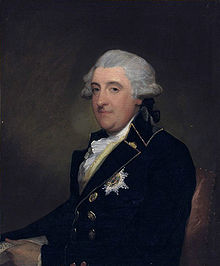
William FitzGerald
William FitzGerald 2nd Duke of Leinster made his Grand Tour between 1768 and 1769. During the same time, he also was Member of Parliament (MP) for Kildare Borough. FitzGerald then sat in the Irish House of Commons for Dublin City until 1773, when he inherited his father’s title and estates. He was appointed High Sheriff of Kildare for 1772. Politically he was a liberal supporter of Henry Grattan’s Irish Patriot Party and he co-founded the Irish Whig Club in 1789. He controlled about six Kildare members of the Irish House of Commons. In 1779 he was elected Colonel of the Dublin Regiment of the Irish Volunteers.
In 1770 FitzGerald was chosen Grandmaster of the Grand Lodge of Ireland, which post he held for two years. He was re-elected for another year in 1777. In 1783 he was among the first knights in the newly created Order of St. Patrick.
In 1788-9 he was Master of the Rolls in Ireland; in theory a senior judicial office, it was then largely a sinecure, but so blatant a choice of a man who wholly unqualified for it gave rise to unfavourable comment, and a few years later it became the rule that the Master must be a lawyer of repute.
FitzGerald was a supporter of Catholic Emancipation and helped to found the Catholic seminary at Maynooth in 1795. Withdrawing from parliament with Grattan in 1797, he moved to England to be with his sick wife and remained there during the 1798 rebellion.
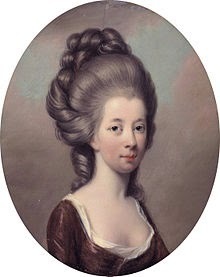
Emilia Olivia St George the Duchess of Leinster
He was the second, but eldest surviving, son of James FitzGerald, 1st Duke of Leinster and the well-connected Lady Emily Mary Lennox. On 4/7 November 1775 he married The Hon. Emilia Olivia Usher St George, daughter of St George Saint-George, 1st Baron St George and Elizabeth Dominick, who died in London on 23 June 1798. He was also the elder brother of the 1790s revolutionary Lord Edward FitzGerald, and was a first cousin of the English liberal politician Charles James Fox.
His Children:
Lady Mary Rebecca FitzGerald (6 May 1777 – 28 September 1842); married on 15 April 1799 Sir Charles Lockhart-Ross, 7th Baronet (died 8 February 1814)
Lady Emily Elizabeth FitzGerald (13 May 1778 – 9 February 1856); married on 13 March 1801 John Joseph Henry of Straffan (died 28 June 1846)
George FitzGerald, Marquess of Kildare (Carton, 20 June 1783 – 10 February 1784)
Lady Cecilia Olivia Geraldine FitzGerald (3 March 1786 – London, 27 July 1863); married at Boyle Farm, Kingston upon Thames on 18 August 1806 Thomas Foley, 3rd Baron Foley (22 December 1780 – London, 16 April 1833)
Lady Olivia Letitia Catherine FitzGerald (9 September 1787 – Bath, 28 February 1858); married in London on 8 May 1806 Charles Kinnaird, 8th Baron Kinnaird (12 April 1780 – Brighton, 12 December 1826)
Augustus FitzGerald, 3rd Duke of Leinster (1791–1874), married Lady Charlotte Augusta Stanhope (1793–1859)
Lord William Charles O’Brien FitzGerald (4 January 1793 – 8 December 1864); married and had:
Geraldine Sydney FitzGerald (died 1896); married on 2 October 1855 Henry William Paget Butler (28 April 1831 – 14 August 1913)
Lady Isabella/e Charlotte FitzGerald (died 1868); married on 1 June 1809 Major-General Louis Guy Charles Guillaume de Rohan-Chabot, Comte de Jarnac (1780–1875)
Lady Elizabeth FitzGerald (died 28 February 1857); married 22 July 1805 Sir Edward Baker, 1st Baronet (died 1825)
His homes were at Carton, where he died, and Kilkea in County Kildare, and at Leinster House in Dublin (now the home of the Irish parliament). He was a founder member of the Order of St Patrick in 1783 and of the Royal Irish Academy (1785), and was a large investor in the Royal Canal company launched in 1790. His family’s estates of 60,000 acres (25,000 Ha) in Kildare were in three main parts, around Maynooth, Rathangan and Athy. He rebuilt the main bridge in Athy over the River Barrow.

RAP’s has Beggars Can’t Be Choosier
One of the our most recent Regency Romances.
Beggars has won the prestigious Romance Reviews Magazine Award for Outstanding Historical Romance:
It is available for sale and I hope that you will take the opportunity to order your copy.
For yourself or as a gift. It is now available in a variety of formats. For $3.99 you can get this Regency Romance for your eReader. A little more as an actual physical book.
When a fortune purchases a title, love shall never flourish, for a heart that is bought, can never be won.
The Earl of Aftlake has struggled since coming into his inheritance. Terrible decisions by his father has left him with an income of only 100 pounds a year. For a Peer, living on such a sum is near impossible. Into his life comes the charming and beautiful Katherine Chandler. She has a fortune her father made in the India trade.
Together, a title and a fortune can be a thing that can achieve great things for all of England. Together the two can start a family and restore the Aftlake fortunes. Together they form an alliance.
But a partnership of this nature is not one of love. And terms of the partnership will allow both to one day seek a love that they both deserve for all that they do. But will Brian Forbes Pangentier find the loves he desires or the love he deserves?
And Katherine, now Countess Aftlake, will she learn to appreciate the difference between happiness and wealth? Can love and the admiration of the TON combine or are the two mutually exclusive?
Purchase here:Amazon Kindle, Barnes and Noble Nook, Kobo, Smashwords, iBooks, & Trade Paperback
Feedback
If you have any commentary, thoughts, ideas about the book (especially if you buy it, read it and like it ;-) then we would love to hear from you.

December 11, 2014
Regency Personalities Series-Isaac Taylor of Ongar
Regency Personalities Series
In my attempts to provide us with the details of the Regency, today I continue with one of the many period notables.
Isaac Taylor of Ongar
1759-1829
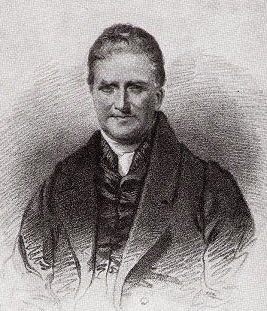
Isaac Taylor
Isaac Taylor of Ongar was the son of Isaac Taylor by his wife Sarah, daughter of Josiah Jefferys of Shenfield, Essex, he was born in London on 30 January 1759. With his elder brother Charles Taylor, after some education at Brentford grammar school, he was brought up as an engraver in the studio of his father, and worked both in landscape and portraiture.
During his apprenticeship the plates for Abraham Rees’s edition of Chambers’s Cyclopaedia were executed under his superintendence at his father’s establishment, and he met Rees. In 1781 he commissioned Richard Smirke to paint four small circular subjects representing morning, noon, evening, and night, which he engraved and published; and two years later he painted and engraved a set of views on the Thames near London. In 1783 he moved from Islington to Red Lion Street, Holborn, and in June 1786 he left London for Lavenham in Suffolk, where he rented a house and a large garden.
He continued his work as an engraver. He was commissioned to engrave a number of plates for John Boydell’s Bible and Shakespeare. In 1791 he engraved the assassination of Rizzio after John Opie (for which the Society of Arts awarded him their gold palette and twenty-five guineas), and in 1796 he completed a book of forty plates illustrating the architectural details of the fifteenth-century church at Lavenham, entitled Specimens of Gothic Ornaments selected from the parish church of Lavenham in Suffolk. He also sketched in watercolours and engraved a series of Suffolk mansions.
From beginning of the Napoleonic Wars the export of English engravings, which had increased rapidly since 1775, as rapidly diminished. Taylor, who had acquired some fame locally as a preacher, moved to Colchester in 1796 on receiving a call to act as pastor to the independent congregation in Bucklersbury Lane. While there he continued working on plates for Boydell’s Shakespeare which he had commenced at Lavenham. That of Henry VIII’s first sight of Anne Boleyn, after Charles Alfred Stothard, was completed in 1802 and brought him £500. In 1812 he engraved a set of designs for James Thomson’s The Seasons.
In December 1810 Taylor was called as nonconformist pastor to Ongar in Essex, and there he lived during the remaining eighteen years of his life. Taylor died on Saturday, 12 December 1829, and was buried on 19 December at Ongar. A portrait engraved by Blood from a drawing by himself was published in the Evangelical Magazine for 1818.
The long series of books from Ongar by members of the family had them talked of as “Taylors of Ongar”, to distinguish them from the contemporary literary family, the “Taylors of Norwich”. The literary productiveness of the extended family of Isaac Taylor of Ongar, led Francis Galton Hereditary Genius (1869), to illustrate from the history of the family his theory of the distribution through heredity of intellectual capacity. Of a family of eleven, six survived childhood, and from the time of his residence at Lavenham Taylor dedicated his spare time to the education of his children; he himself was self-taught. Years of teaching led him to evolve a series of educational manuals. His own books were:
‘The Biography of a Brown Loaf’ (London, n.d.);
‘Self-cultivation recommended, or hints to a youth on leaving school’ (1817,; 4th ed. 1820);
‘Advice to the Teens’ (1818, two editions);
‘Character essential to Success in Life’ (London, 1820);
‘Picturesque Piety, or Scripture Truths illustrated by forty-eight engravings, designed and engraved by the author’ (London, 1821);
‘Beginnings of British Biography: Lives of one hundred persons eminent in British Story’ (London, 2 vols., 1824, two editions);
Beginnings of European Biography’ (London, 2 vols. 1824–5; 3 vols. 1828–9);
‘Bunyan explained to a Child’ (London, 1824, 2 vols., and 1825);
‘The Balance of Criminality, or Mental Error, compared with Immoral Conduct’ (London, 1828).
Taylor also issued, with engravings from designs mostly by himself (a few were by his son Isaac), a series of topographies: ‘Scenes in Europe’ and ‘Scenes in England’ (1819), extended to ‘Scenes in Asia,’ ‘Scenes in Africa,’ ‘Scenes in America,’ ‘Scenes in Foreign Lands,’ ‘Scenes of British Wealth,’ and (posthumously in 1830) ‘Scenes of Commerce by Land and Sea.’
On 18 April 1781 Taylor married at Islington Ann Martin, and had issue:
Ann born at Islington on 30 January 1782, who married Joseph Gilbert;
Jane Taylor;
two Isaacs who died in infancy;
Isaac (1787–1865);
Martin Taylor (1788–1867), the father of Helen Taylor;
Harriet, Eliza, and Decimus, who died in infancy;
Jefferys;
and Jemima (1798–1886), who married, on 14 August 1832, Thomas Herbert.
Born on 20 June 1757, from the time of the move to Lavenham at in 1786 Mrs. Ann Taylor (1757–1830) shared the educational ideals of her husband. She corresponded with her children during their absences from home, and this correspondence was the nucleus of a series of short manuals of conduct:
‘Advice to Mothers’ (London, n.d.);
‘Maternal Solicitude for a Daughter’s best Interests’ (London, 1813; 12th ed. 1830);
‘Practical Hints to Young Females, or the duties of a wife, a mother, and a mistress of a family’ (London, 1815; 11th ed. 1822);
‘The Present of a Mistress to a Young Servant’ (London, 1816; several editions);
‘Reciprocal Duties of Parents and Children’ (London, 1818; 3rd ed. 1819);
‘The Family Mansion’ (London, 1819; a French version appeared in the same year; 2nd ed. 1820);
‘Retrospection, a Tale’ (London, 1821);
‘The Itinerary of a Traveller in the Wilderness’ (London, 1825,); and also
‘Correspondence between a Mother and her Daughter [Jane] at School’ (London, 1817; 6th ed. 1821).
Ann Taylor died at Ongar on 4 June 1830; she was buried beside her husband under the vestry floor of Ongar chapel.

Conclusion of the Trolling Series-We’ll All Go A Trolling
We’ll All Go A Trolling Not only do I write Regency and Romance, but I also have delved into Fantasy.
The Trolling series is the story of a man, Humphrey. We meet him as he has left youth and become a man with a man’s responsibilities.
We follow him in a series of stories that encompass the stages of life. We see him when he starts his family, when he has older sons and the father son dynamic is tested.
We see him when his children begin to marry and have children, and at the end of his life when those he has loved, and those who were his friends proceed him over the threshold into death.
All this while he serves a kingdom troubled by monsters. Troubles that he and his friends will learn to deal with and rectify. It is now available in a variety of formats.
For $2.99 you can get this fantasy adventure.
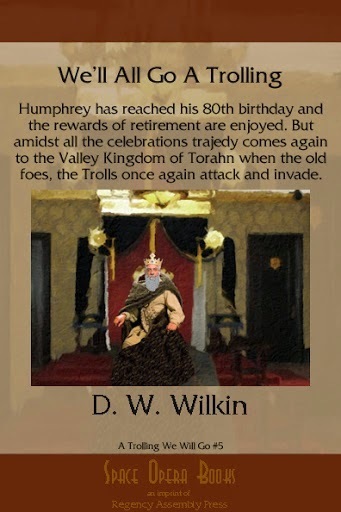
Barnes and Noble for your Nook
King Humphrey, retired, has his 80th birthday approaching. An event that he is not looking forward to.
A milestone, of course, but he has found traveling to Torc, the capital of the Valley Kingdom of Torahn, a trial. He enjoys his life in the country, far enough from the center of power where his son Daniel now is King and rules.
Peaceful days sitting on the porch. Reading, writing, passing the time with his guardsmen, his wife, and the visits of his grandson who has moved into a manor very near.
Why go to Torc where he was to be honored, but would certainly have a fight with his son, the current king. The two were just never going to see eye to eye, and Humphrey, at the age of 80, was no longer so concerned with all that happened to others.
He was waiting for his audience with the Gods where all his friends had preceded him. It would be his time soon enough.
Yet, the kingdom wanted him to attend the celebrations, and there were to be many. So many feasts and fireworks he could not keep track, but the most important came at the end, when word was brought that the Trolls were attacking once more.
Now Humphrey would sit as regent for his son, who went off to fight the ancient enemy. Humphrey had ruled the kingdom before, so it should not have been overwhelming, but at eighty, even the little things could prove troublesome.
Feedback
If you have any commentary, thoughts, ideas about the book (especially if you buy it, read it and like it ;-) then we would love to hear from you.

December 10, 2014
Regency Personalities Series-Samuel Whitbread (Politician)
Regency Personalities Series
In my attempts to provide us with the details of the Regency, today I continue with one of the many period notables.
Samuel Whitbread (Politician)
January 18, 1764 – 6 July 1815
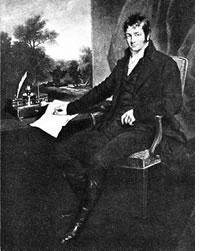
Samuel Whitbread
Samuel Whitbread (Politician) was born in Cardington, Bedfordshire, the son of the brewer Samuel Whitbread. He was educated at Eton College, Christ Church, Oxford and St John’s College, Cambridge, after which he embarked on a European ‘Grand Tour’, visiting Denmark, Sweden, Russia, Poland, Prussia, France and Italy. He returned to England in May 1786 and joined his father’s successful brewing business.
Whitbread was elected Member of Parliament for Bedford in 1790, a post he held for twenty-three years. Whitbread was a reformer — a champion of religious and civil rights, for the abolition of slavery, and a proponent of a national education system. He was a close friend and colleague of Charles James Fox. After Fox’s death, Whitbread took over the leadership of the Whigs, and in 1805 led the campaign to have Henry Dundas, 1st Viscount Melville, removed from office.
Whitbread admired Napoleon and his reforms in France and Europe. He hoped that many of Napoleon’s reforms would be implemented in Britain. Throughout the Peninsular War he played down French defeats convinced that sooner or later Napoleon would triumph, and he did all he could to bring about a withdrawal of Britain from the continent. When Napoleon abdicated in 1814 he was devastated.
Whitbread began to suffer from depression, and on the morning of 6 July 1815, he committed suicide by cutting his throat with a razor.
Whitbread married Elizabeth, the eldest daughter of the first Earl Grey on 26 December 1787. Their sons William Henry Whitbread and Samuel Charles Whitbread were also Members of Parliament.
Samuel Whitbread Academy in Central Bedfordshire is named after him.

RAP has The End of the World
The End of the World This is the first of the Regency Romances I published. It is available for sale and I hope that you will take the opportunity to order your copy.
For yourself or as a gift. It is now available in a variety of formats. For $5.99 you can get this Regency Romance for your eReader. A little more as an actual physical book.
Barnes and Noble for your Nook
Amazon for your Kindle and as a Trade Paperback
Hermione Merwyn leads a pleasant, quiet life with her father, in the farthest corner of England. All is as it should be, though change is sure to come. For she and her sister have reached the age of marriage, but that can be no great adventure when life at home has already been so bountiful.
When Samuel Lynchhammer arrives in Cornwall, having journeyed the width of the country, he is down to his last few quid and needs to find work for his keep. Spurned by the most successful mine owner in the county, Gavin Tadcaster, Samuel finds work for Gavin’s adversary, Sir Lawrence Merwyn.
Can working for Sir Lawrence, the father of two young women on the cusp of their first season to far away London, be what Samuel needs to help him resolve the reasons for his running away from his obligations in the east of the country?
Will the daughters be able to find happiness in the desolate landscapes and deadly mines of their home? When a stranger arrives in Cornwall while the war rages on the Peninsula, is he the answer to one’s prayers, or a nightmare wearing the disguise of a gentleman?
Feedback
If you have any commentary, thoughts, ideas about the book (especially if you buy it, read it and like it ;-) then we would love to hear from you.

December 9, 2014
Regency Personalities Series-Craven Berkeley
Regency Personalities Series
In my attempts to provide us with the details of the Regency, today I continue with one of the many period notables.
Craven Berkeley
May 1805 – 1 July 1855
Craven Berkeley was the seventh son of Frederick Berkeley, 5th Earl of Berkeley, and Mary, daughter of William Cole. He was the younger brother of William Berkeley, 1st Earl FitzHardinge, Maurice Berkeley, 1st Baron FitzHardinge and Henry FitzHardinge Berkeley (born to the same mother but declared illegitimate according to a decision by the House of Lords) and also of the Hon. Grantley Berkeley.
Craven entered Parliament for Cheltenham in 1832, a seat he held until 1847. In the 1847 general election the seat was won by Sir Willoughby Jones, but his election was declared void in May the following year. Berkeley was elected in his place in June 1848 but his election was declared void two months later. In 1852 he was again successfully returned for the constituency, and held the seat until his death three years later.
Berkeley married firstly Augusta, daughter of Sir Horace St Paul, 1st Baronet and widow of George Henry Talbot, in 1839. They had one daughter. After Augusta’s death in April 1841, aged 28, he married secondly Charlotte, daughter of General Denzil Onslow, in 1845. Berkeley died in July 1855, aged 50. His daughter Louisa Mary succeeded as 15th Baroness Berkeley in 1882. Charlotte Berkeley died in January 1897.

Space Opera Books Presents Trolling, Trolling, Trolling Fly Hides
Trolling, Trolling, Trolling Fly Hides!
Not only do I write Regency and Romance, but I also have delved into Fantasy.
The Trolling series, (the first three are in print) is the story of a man, Humphrey. We meet him as he has left youth and become a man with a man’s responsibilities.
We follow him in a series of stories that encompass the stages of life. We see him when he starts his family, when he has older sons and the father son dynamic is tested.
We see him when his children begin to marry and have children, and at the end of his life when those he has loved, and those who were his friends proceed him over the threshold into death. All this while he serves a kingdom troubled by monsters.
Troubles that he and his friends will learn to deal with and rectify.
It is now available in a variety of formats. For $2.99 you can get this fantasy adventure.
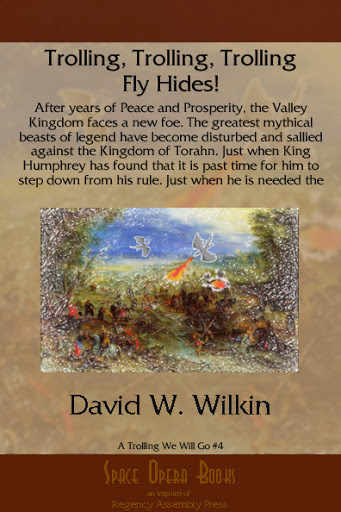
Barnes and Noble for your Nook
Old age is catching up to Humphrey and his friends. He feels it in his bones and with his son and heir having reached the prime of his life, it could very well be time to pass the baton of rule to Daniel.With the Valley Kingdom of Torahn at Peace, that would not be a terrible thing to do. Though breaking his decision to his wife Gwendolyn, the Queen, might be the hardest battle that he ever would fight.
Even as the life of retirement looks to be attractive and possible, however, the Valley Kingdom is beset again. Not Goblins, Trolls, Giants or Men, this time. No. That Humphrey knew would be far too easy.
Those obstacles had been overcome before and the problems they presented had solutions that the army of Torahn was trained to deal with. No, of all the creatures that came forth from Teantellen that they had beaten, the one they had never faced now came forth. Dragons!
Who in the realm knew how to fight these mythical beasts? Was there even away to do so?
Now Humphrey who had thought to spend the remainder of his days quietly writing his memoirs and drinking, was faced with the greatest challenge he had ever known.
Feedback
If you have any commentary, thoughts, ideas about the book (especially if you buy it, read it and like it ;-) then we would love to hear from you.

December 8, 2014
Regency Personalities Series-Richard Barwell
Regency Personalities Series
In my attempts to provide us with the details of the Regency, today I continue with one of the many period notables.
Richard Barwell
8 October 1741 – 2 September 1804
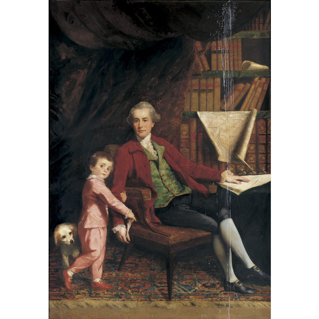
Richard Barwell
Richard Barwell was the son of William Barwell, governor of Bengal in 1748, and afterwards a director of the East India Company and Sheriff of Surrey in 1768. His family, which apparently came from Kegworth, Leicestershire, had been connected with the East for generations.
Barwell was born in Calcutta in 1741 and appointed a writer on the Bengal establishment of the East India Company in 1756 and landed at Calcutta on 21 June 1758. After a succession of lucrative appointments, he was nominated in the Regulating Act (13 Geo. III, c. 63) a member of council in Bengal, with Philip Francis as one of his colleagues, General Clavering as commander-in-chief, and Warren Hastings as governor-general. The statute is dated 1772–3, but the members of council did not take their seats until 20 October 1774.
Barwell is known to history for his constant support of Hastings, in opposition to the party led by Francis. Hastings wrote of him, ‘He possesses much experience, a solid judgment, much greater fertility of resources than I have, and his manners are easy and pleasant.’ Francis differed, writing, ‘He is rapacious without industry, and ambitious without an exertion of his faculties or steady application to affairs. He will do whatever can be done by bribery and intrigue; he has no other resource.’
A scandalous story about him is found in a rare book entitled ‘The Intrigues of a Nabob; or Bengal the fittest Soil for the Growth of Lust, Injustice, and Dishonesty It alleges that Barwell had enticed away the writer’s mistress, who passed at Calcutta for his wife and then discontinued an annuity promised to the writer as the price of his acquiescence. While member of council he was accused of deriving an illicit profit of 20,000 a year from certain salt contracts. His prosecution was ordered by the court of directors, but the proceedings fell through. In connection with this affair he fought a bloodless duel with General Clavering. Francis and Barwell were antagonists at the whist-table, where Francis is said to have won 20,000 at a sitting. In 1780, after a truce between Hastings and Francis, Barwell retired from the service.
He allegedly brought back one of the largest fortunes ever accumulated. The phrase ‘Fetch more curricles’ is associated with him. In 1781 he bought the estate of Stanstead in Sussex from the trustees of the Earl of Halifax for 102,500 and subsequently added to his possessions in that county. He ‘enlarged and remodelled [Stanstead House] in a style of expense which contributed to exhaust the oriental treasures by which it was supplied.’ As architects, Bonomi and James Wyatt were employed on the work for five years, while ‘Capability’ Brown laid out the grounds. In 1781 Barwell was returned as tory M.P. for Helston, in 1784 for St Ives, and in 1790 and 1796 for Winchelsea. In December 1796 he resigned. He died at Stanstead on 2 September 1804.
In 1776 he had married a Miss Sanderson, the reigning beauty of Calcutta; but she died in November 1778, leaving one son. A portrait of Barwell, seated in his library with this son by his side, was painted by Sir Joshua Reynolds, and engraved in mezzotint by William Dickenson. Shortly after his death his estates in Sussex were sold by his trustees, one of whom was Sir Elijah Impey.


